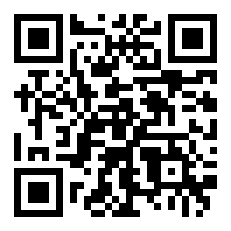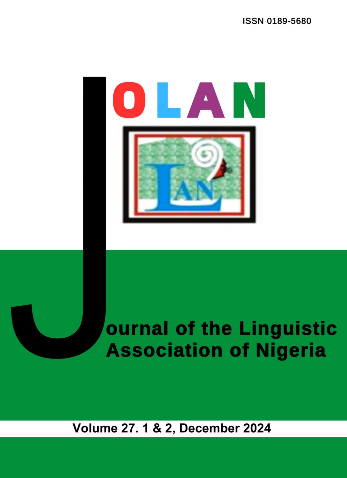Cognitive Semantic Analysis of Shehu Sani’s Poem for the Broom
Keywords:
Cognitive semantics, Poem for the Broom, Shehu Sani, analogical mappingAbstract
This research aims at studying Shehu Sani’s ‘Poem for the Broom’ from a cognitive semantic perspective. The objectives of the study are to examine the attribute mapping, relational mapping, and the system mapping of the poem. The datum for the study is elicited from Shehu Sani’s Facebook page. The theory of analogical mapping, which has a bearing with cognitive poetics, is adopted as the framework for data analysis. The research found out that there are attribute mappings of concrete entities into abstract entities as were seen between ‘Broom’ and ‘leadership,’ ‘blood’ and ‘killings,’ ‘swords’ and ‘wars,’ ‘carpets’ and ‘secrets’ amongst others. The study also discovered that, at the relational level, the idea of the Broom is mapped onto the ideals of good leadership. Non-partisan discharge of duties is the source domain whereas sweeping those of friends under the carpet is the target domain. At the system mapping level, the study showed that the ‘Broom’ was used as a proper noun and the pronoun ‘it’ serves as its replacement. Hence, the structural metaphor observed from the poem proceeds from ‘politics is a game.’ From a semantic point of view of the system mapping, the research revealed that the ‘Broom’ in the poem is a metaphor representing APC, which uses broom as its logo. Therefore, in a good democratic government, a country should not be tainted with corruption and other forms of misconduct. The research recommended that a cognitive semantic analytical approach should be adopted in analysing poems and discourses of political actors in Nigeria.
References
Bussmann, H. 1996. Routledge dictionary of language and linguistics. New York: Routledge.
Esfehani, L. S. 2011. “The functions of conceptual mappings in the interpretation of Omar Khayyam's poetry.” Journal of Language and Culture 2 (12): 204-213.
Falkenhainer, B., K. D. Forbus, and D. Gentner. 1989. “The structure-mapping engine: Algorithm and examples.” Artificial Intelligence 41: 1-63.
Fauconnier, G., and M. Turner. 2002. The way we think: Conceptual blending and the mind’s hidden complexities. New York: Basic Books.
Fauconnier, G. (1997). Mappings in thought and language. Cambridge: Cambridge University Press
Freeman, M. 1998. “Poetry and the scope of metaphor: Toward a theory of cognitive poetics.” In Metaphor and metonymy at the crossroads, edited by A. Barcelona, 253-281. The Hague: Mouton de Gruyter.
Gentner, D. 1983. “Structure mapping: A theoretical framework for analogy.” Cognitive Science 7: 155-170.
Holyoak, K., and P. Thagard. 1995. Mental leaps: Analogy in creative thought. Cambridge: MIT Press.
Johnson, M. 1987. The body in the mind: The bodily basis of meaning, imagination, and reason. Chicago: University of Chicago Press.
Johnson, M. 1993. Moral imagination: Implications of cognitive science for ethics. Chicago: University of Chicago Press.
Johnson, M. 2005. “The philosophical significance of image schemas.” In From perception to meaning: Image schemas in cognitive linguistics, edited by B. Hampe, 15-33. New York: Mouton de Gruyter.
Krisagbedo, E. C., and C. U Agbedo. 2018. “The ‘other room’ metaphor as a linguistic marker of sexism and gender-based violence.” Paper presented at 2018 International Conference/Chinua Achebe Memorial Lecture, Faculty of Arts, University of Nigeria Nsukka, April 8-13.
Lakoff, G., and M. Johnson. 1980. Metaphors we live by. Chicago: University of Chicago Press.
Lakoff, G., and M. Turner. 1989. More than cool reason: A field guide to poetic metaphor. Chicago: University of Chicago Press.
Lakoff, G. 1987. Women, fire and dangerous things: What categories reveal about the mind. Chicago: University of Chicago Press.
Mbah, B. M. and P. N. Edeoga. 2012. “Image schema of the verb ‘Sè’ in Igbo semantics.” Research on Humanities and Social Sciences 2 (7): 41-47.
Obitube, K. O. 2017. “Theory of analogical mapping.” In Theories of contextual linguistics: Articles in honour of Professor Gabriella Ihuaruugo Nwaozuzu, edited by B. M. Mbah, 59-73. Awka: Amaka Dreams Ltd.
Onuoha, E., B. M. Mbah, and G. I. Nwaozuzu. 2014. “A cognitive semantic analysis of the verb kwà.” Nsukka Working Papers in Language, Linguistics & Literature 1 (3): 121-132.
Saeed, J. I. 2003. Semantics. 2nd ed. Oxford: Blackwell Publishing.
Sweetser, E. E. 1990. From etymology to pragmatics. Cambridge: Cambridge University Press.
Tsur, R. 1980. Toward a theory of cognitive poetics. Amsterdam: North Holland.
Turner, M. 1987. Death in the mother of beauty: Mind, metaphor, criticism. Chicago: University of Chicago Press.














